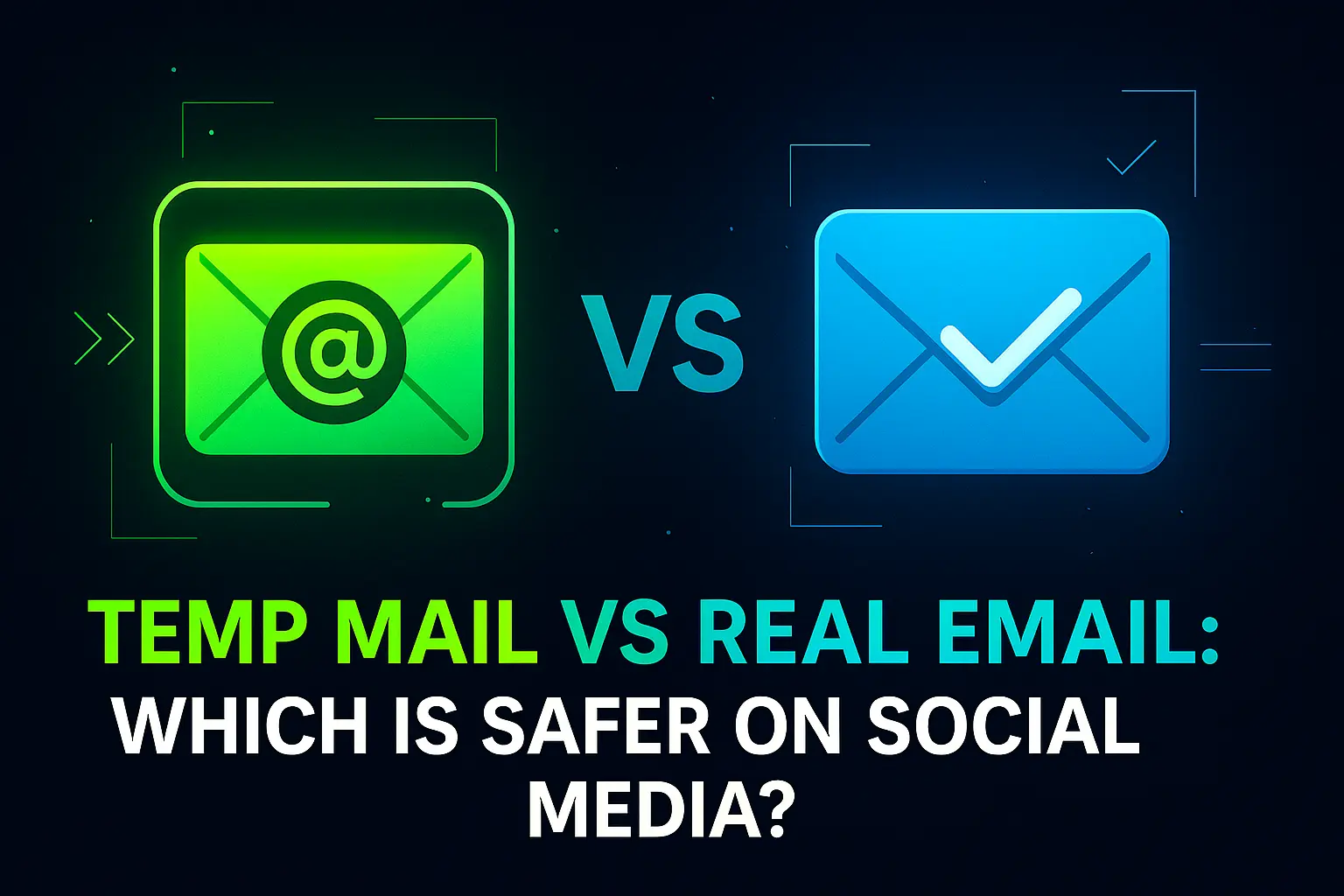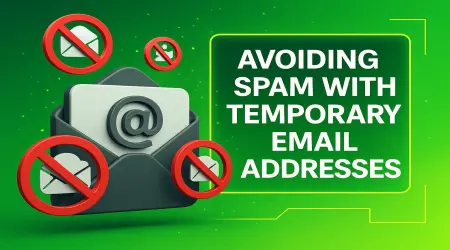

Temp Mail vs Real Email: Which Is Safer on Social Media?
Temp Mail vs Real Email: Which Is Safer on Social Media?
When you create an account on a social media platform like Instagram, Facebook, or TikTok, one of the first things you’re asked for is your email address. But here’s the question — should you use your real, permanent email, or is it better to use a temporary one? The debate over Temp Mail vs real email has become increasingly important as online privacy risks continue to grow.
In this in-depth comparison, we’ll break down the pros, cons, and use cases for both options, so you can decide which is safer for your social media activity.
Why Your Email Choice Matters on Social Media
Social media accounts are closely tied to your email address. That email is the gateway to resetting your password, verifying your account, and receiving notifications. If it gets into the wrong hands, your entire account could be compromised.
Unfortunately, email addresses are often leaked through data breaches, sold to advertisers, or targeted by phishing scams. This makes choosing the right email for social media a critical security decision.
What Is Temp Mail?
TempMaila.org provides temporary, disposable email addresses that you can use without revealing your personal contact information. They exist for a short time and can be discarded when no longer needed.
Advantages of Temp Mail for Social Media
- Protects your main inbox from spam and phishing.
- Keeps your identity private during sign-ups.
- Prevents your real email from appearing in leaks or breaches.
- Allows quick account creation for testing or short-term use.
Disadvantages of Temp Mail
- May not be suitable for long-term accounts you want to keep forever.
- Some platforms block disposable email domains.
- If you lose access to the temp inbox, you can’t reset your password.
What Is a Real Email?
A real email is a permanent address from providers like Gmail, Outlook, or Yahoo. It’s linked to you for as long as you keep the account active.
Advantages of Real Email for Social Media
- Ideal for long-term accounts you want to maintain indefinitely.
- Better compatibility with all platforms and services.
- Easier to recover accounts if you forget your password.
Disadvantages of Real Email
- Attracts spam over time.
- Exposes your personal identity to more risks.
- Becomes a target in phishing campaigns.
Direct Comparison: Temp Mail vs Real Email
| Criteria | Temp Mail | Real Email |
|---|---|---|
| Privacy | High — not linked to your real identity | Lower — tied to your personal info |
| Spam Protection | Excellent — discard after use | Moderate — requires spam filters |
| Account Recovery | Risky if mailbox expires | Secure if you control the account |
| Platform Compatibility | Sometimes restricted | Accepted everywhere |
| Long-Term Use | Not ideal | Best choice |
Best Use Cases for Temp Mail on Social Media
Temp Mail shines in specific scenarios:
- Testing new features: Creating temporary accounts to experiment with ads, hashtags, or engagement tools.
- Joining giveaways: Enter contests without exposing your main inbox.
- Short-term collaborations: Work with influencers or brands without permanent email exposure.
- Trying third-party apps: Keep your real email safe from potential leaks.
For example, if you want to enter an Instagram giveaway but don’t want a lifetime of marketing spam, you can follow the advice in 10 Smart Ways to Use Temp Mail for Instagram Account Security.
Best Use Cases for Real Email on Social Media
Real email is the better choice when:
- You’re creating a personal or business account for long-term use.
- You want full access to recovery options in case of hacking.
- You rely on email for important notifications and two-factor authentication.
Hybrid Approach: The Best of Both Worlds
Many security experts recommend a hybrid strategy — using Temp Mail for risky, short-term, or experimental accounts, and real email for long-term, critical profiles. This way, you protect your personal inbox while keeping your primary accounts secure.
Example Strategy
- Use real email for your main Facebook, Instagram, and LinkedIn accounts.
- Use Temp Mail for TikTok experiments, contest entries, or beta-testing features.
- Maintain separate real emails for personal vs business use.
Security Tips for Both Email Types
Regardless of whether you choose Temp Mail or real email, these practices will improve your social media safety:
- Enable two-factor authentication (2FA) on all accounts.
- Use unique, strong passwords for each platform.
- Be wary of suspicious links, even if they appear official.
- Regularly check your account’s login history.
Related Articles
- Avoiding Spam with Temporary Email Addresses
- How to Use Temp Mail on Social Media Platforms
- 10 Smart Ways to Use Temp Mail for Instagram Account Security
Conclusion
When it comes to social media, there’s no one-size-fits-all answer to the Temp Mail vs real email debate. Each has its strengths and weaknesses, and the safest choice depends on your goals. If you value long-term stability and recovery options, a real email is the way to go. But if your priority is avoiding spam, protecting your identity, and keeping risky sign-ups separate, Temp Mail from TempMaila.org is your best friend.
In many cases, the smartest move is to combine both — using each tool where it’s strongest. This balanced approach ensures that you enjoy social media while keeping your personal data, privacy, and peace of mind intact.




